#or in9 in general
Explore tagged Tumblr posts
Text


father to father.
(additional art under the cut)

#my art#fanart#inside no 9#steve pemberton#reece shearsmith#the trolley problem#yes i’m drawing this episode again#i’ve written thousands of words of analysis about it and i still can’t decide if i think it’s good or not#either way i’m obsessed with it#the text in these pieces are lyrics to a wolf at the door by radiohead#it’s *their* song#also whilst i’m here feel free to send asks or msgs about my art#or in9 in general#i like to hope i come off as approachable
93 notes
·
View notes
Text
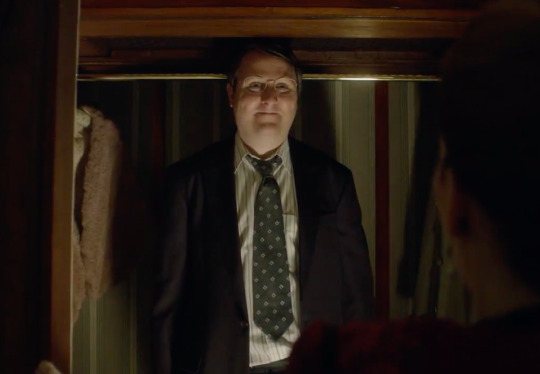
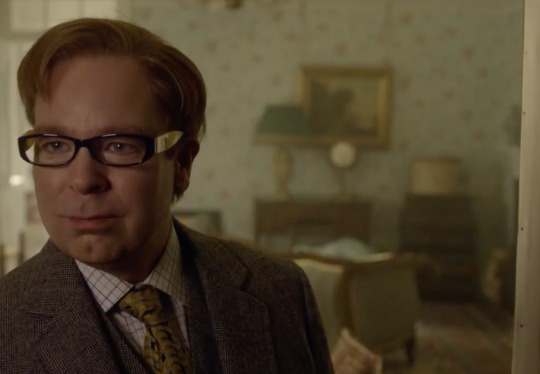

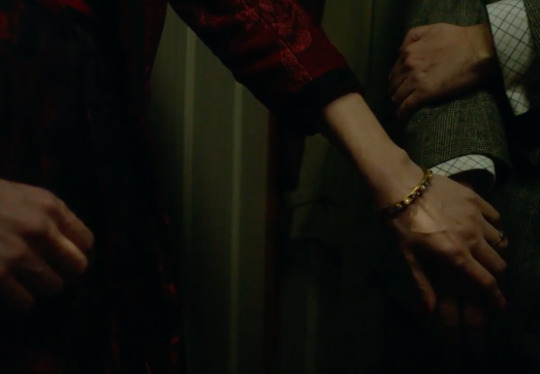
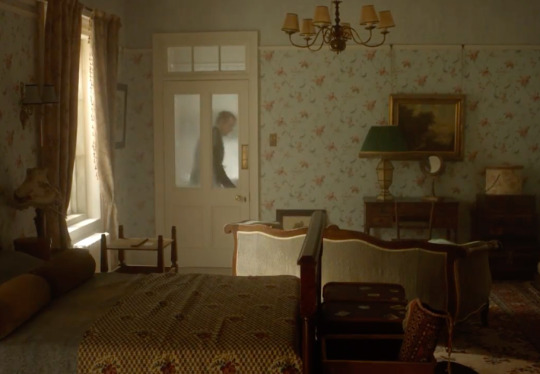

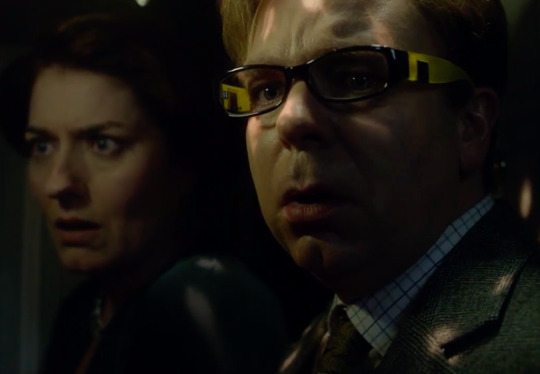
-So what happens now? -We wait for the others to find us. -So how do you win? -Nobody wins, you just wait.
INSIDE NO. 9 - S1E1 "Sardines"
#in9#inside no 9#inside no. 9#in9 frames#sardines#tim key#steve pemberton#ok so this started out as a general appreciation post for tim key + his performance as ian#then i started to dive into why i watched this show in the first place and i'm saving that for AFTER s/f#speaking of which...exactly 1 more month till s/f for me!!! this is really just to mark/start that countdown#when this ep comes up in round 4 hopefully i can post about it more! or just talk about it in general some time#(posting this in HTML mode so the italics better not mess up again)#vagueeyes.txt
60 notes
·
View notes
Text
Okay, I realised something that might make a pre-existing Inside No. 9 episode even more tragic. (Spoilers for Act 1 of Stage/Fright under the cut)
Right. In case you haven't seen it, but decided to read on anyway, quite a lot of the first act of Stage/Fright is set up around Bernie Clifton's Dressing Room. Most of the episode plays out as usual, except for a segment where Tommy finds a script in Len’s things and it is performed for the audience.
The script is about the burglars from A Quiet Night In struggling to carry out a kidnapping. This does imply the existence of an Inside No. 9 cinematic universe, but that's a conversation for another day.
What's most interesting to me about this script is that Tommy reads some of it out before it transitions into the performance, and it's specifically noted that Len and Tommy would be playing the characters (hence why they have the same names as the A Quiet Night In burglars).
If we take this as canon in the Bernie Clifton's Dressing Room universe, this leaves us with two options for when Len wrote the script.
Either, he wrote it relatively recently, for himself and a man he hadn't seen in thirty years. He might've written it at a similar time as he wrote the letter with the £25 he owed Tommy. Len was still thinking about him decades later.
Or, he wrote it back when Cheese and Crackers were still together. This isn't that crazy, until you think about the fact that Len was evicted from his house in the thirty years between them breaking up, and, as we're told in the episode, only had fifteen minutes to take what he could. This would mean that one of the things he took was a script he'd written for himself and his ex best friend / comedy partner. One of the things that was most important to him.
In conclusion, I am not normal about two characters from a single episode of a black comedy anthology series.
#does anyone else care about this? maybe not#but i realised this at midnight and im already unwell about this episode so this didnt help#side note - i wish in9 was more popular so thered be loads of ridiculous theories and video essays attempting to connect the episodes#also i just wish it was more popular in general#inside no 9#inside no. 9#stage/fright#stage/fright spoilers#bernie clifton's dressing room#len shelby#tommy drake#steve pemberton#reece shearsmith
38 notes
·
View notes
Text
Dear mutuals and/or tag visitors, pls give me an episode of Inside No 9 to (re)watch. I'm in that particular state of craving some entertainment yet being too tired to choose what to watch so I'm turning to the tumblr hive mind in hope of answers. thx
#inside no 9#in9#or rec me anything at all my to watch list seems empty rn in general#comedy or detective genre related media prefereably
20 notes
·
View notes
Text
Steven James Pemberton the only man i could find attractive shitting in a shoebox
#german is a very attractive language to me and my language kink#also hes just fit in general#steve pemberton#in9#la couchette#this is a joke#sort of#reece shearsmith
12 notes
·
View notes
Text
I think the funniest thing to me about The Understudy is why the misdirection involved (to me at least) works so well.
It makes such a show of the story it's "retelling" that you really don't notice how different it is until the very end.
(this is a long, tired ramble btw. Underrated episode <3)
A major aspect of Macbeth is how, despite the obvious involvement and influence of the Witches and Lady Macbeth, he is ultimately the one who makes the decision to kill Duncan and continue to act and kill afterwards. He made the active choice to murder.
The Understudy originally presents itself as a "retelling" (?) of the Shakespearean Macbeth story through through a theatre group performing that very play. Jim, as the understudy to Tony's Macbeth, is meant to embody the Macbeth to Tony's King Duncan. Jim even appears to have similar visions/hallucinations throughout (I don't know what to really call those). His fiancée and fellow understudy Laura takes the role of Lady Macbeth (both literally and figuratively).
However, our Jim, unlike Macbeth, never makes that act. He remains pretty passive throughout the whole story.
Everything by the end of Act II seems to suggest that things are going to play out the way of Macbeth. Laura and Jim's situation is established, (their financial position, the upcoming wedding and their desire to take that main lead) and the seed of violence has been planted by Laura, similar to Lady Macbeth herself.
Even Act III seems to follow that narrative, with the "King Duncan" character of Tony (ironically playing Macbeth) being taken down from his role of authority - with Tony having his juice spiked with vodka and unable to perform.
Laura offers Jim the dagger, now being seen as bloody by Jim....
....And he doesn't take it. He doesn't do anything and eventually Tony takes it back
Jim soon gets another opportunity to take the lead and make Tony rest, as encouraged by Laura. Once again, Jim panics, refuses to act, which lets Tony go back on stage (although that does lead to Tony's ultimate downfall).
This rejection of the spotlight, despite wanting it, is an active diversion from the original Macbeth story. Although his lack of action does mean Tony is put out of commission, he never actually makes the conscious decision to harm him unlike Macbeth.
This consistent passivity of his also keeps that point of conflict between him and Laura's own ambition, which includes possibly my favourite interaction in the episode.
"I'm there if they want me"
"What!? Stuck in the corner of the room, like a television on standby?"
"Yes."
Jim is essentially the anti-Macbeth. Whereas Macbeth seems to want more than what he already has, Jim is not only seen as much lower in that social area than Macbeth ever was, but he is content that way. He wants the lead role Tony has, but also has zero want to push for it, especially not as much as Laura would want from him.
Then the scene cuts and Tony, too injured to perform, is replaced by Jim. His understudy gets the lead. Macbeth takes the crown from Duncan. And he never did anything to get it.
The closest Jim ever does to making an active choice is rejecting dinner with Laura (admittedly in a pretty prick-ish way but still), before thanking her for getting him the role in the first place implying he thought she caused Tony's accident, which is an opinion he openly states near the end.
In his version of the story, Lady Macbeth is the one that killed Duncan. Or at least that's what Jim believes.
Up to the final act, whilst there have been these cracks here and there, the episode still seemingly follows the Macbeth narrative structure.
Then Kirstie gets involved at the very end and any pretense is dropped entirely.
(side note: this whole final scene is such an underrated unnerving bit. Rosie Cavaliero is insanely good)
Arguably, although the notion of it being a direct Macbeth retelling is destroyed by now, Jim learning about Laura's suicide seems to parallel the scene where Macbeth is informed of his wife's suicide also (even though Laura and Jim were no longer together, which may parallel the emotional distance between Lady Macbeth and Macbeth at that point in the play). However, once again, our Macbeth doesn't act. Kirstie says her piece, reveals she stole Laura's ring, kisses him, leaves and all Jim really does is go back on stage.
I should note that, although this scene is Kirstie casually confessing to her involvement throughout the timeline of this episode, she isn't a fully reliable source of information.
A way this can be seen is through how she seems to speak for both Laura after her death and for Jim.
"Looking after Tony is the price I pay for what I did. Just as Laura's death is the price you pay".
"That was nothing to do with me"
"I know it wasn't. Your career had to come first. You told her that"
Jim never did that. That whole previous scene was pretty douche-y of him but by the end he clearly shows the appreciation for what he thought Laura did for him - getting him this role.
Whilst we can't be sure that Kirstie is referring to the scene just beforehand (as they seem to have broken up between scenes), judging by the content of that scene and the lack of immediate animosity from Jim in regards to Laura throughout that scene and how unaware he was of her fate, I doubt what Kirstie says is true.
Kirstie not only assumes Laura's motivations and speaks for her but she places the responsibility on him for his inaction on the same level as own active choice to harm Tony.
Essentially, Jim's lack of action being unlike the point of Macbeth as an underrated bit of foreshadowing for how The Understudy diverts from and completely flips the Macbeth play on it's head, but the obvious parallels in character and story beat act as a good misdirection from this.
(One question I do have is what is up Jim? His visions, which only occur when he seems to picture himself in the role of Macbeth, don't amount to a conclusion besides that misdirection and expanding on his own anxieties about taking up the lead role. But, in the context of the episode itself, what was up with that?)
#all of this talk of active choice vs passively doing nothing is reminding me of the trolley problem#the episode not the moral dilemma in general#i think this is my biggest ramble yet on here lol#I'll probably fix bits later#when I'm less tired#inside no 9#in9#the understudy
13 notes
·
View notes
Text
forgot I was gonna go deeper into the meaning behind some of my choices in this piece and since I'm in a bit of a creative rut atm imma do it now!
so I think I've mentioned somewhere else, but fsr I keep going for blue and red in my in9 artworks and I don't 100% know why lol... but specifically in this piece I wanted to create a distinction between what is reality (the blue curtain, the blood) and what is happening in Tom's head (silhouettes of Migg and Gerri) and red and blue act as really nice contrasting colours in this case!
(also not to get all into Colour Theory, but both colours do have v specific connotations that I really wanted to emphasise the real vs fake dichotomy going on in the episode...)
in terms of the silhouettes, idk how obvious it is, but the face coming from Tom is supposed to be Gerri whereas the one from the edge is Migg (creating shockwaves as he's getting closer to Tom) with a bigger band of yellow separating the two, which I was heavily inspired by this amazing bit of analysis from @kookaburrito's review of the ep:
'Gerri is a ray of sunshine, and even though Gerri died that love Tom had for her pulls him out of a dark place and I think that's wonderful and sweet. Love saves all. Love makes you kill your toxic manipulator roomate, how beautiful.'
I just really loved the visual created there so I... created a visual based on it lool??
stylistically I wanted to keep this pretty textural since the whole episode and Tom's character as a whole has a sorta 'spiky' feel to it in my head... (which I did by not using my usual blending brush but the pen brush instead, which creates really fun distinct sections of each colour! it's a technique I don't do super often but do always enjoy how it looks in the end tbhh)
the other versions of the piece are also supposed to be reflections of Tom's splintered self; the way grief breaks you apart from the inside and distorts your entire perception of everything (in9 is SO good at doing this theme and I love it every single time lol)
but uh yeah that's about it pfft? hope this was interesting lol???



[he's not real]
an artwork based on the inside no 9 episode tom & gerri
(11/2024)
this ep is so devastating & beautiful & brutal tbhh I really hope I captured the vibe of it here!
#the analysis no one asked for but u got anyway pfft#i might do this w/ some of my other in9 artworks (or just my general other art) because..... a girl loves to yap#cheers for all the love on this piece btw <3
53 notes
·
View notes
Text
good morning good morning good morning a la hugo
ok i'm going to try and dump as much as i can remember about last night before i need to head out for today but i will definitely forget things so this might be a 2-parter
warning this is SO LONG i apologise in advance
✨ it's almost time to say goodbye, ta-ta and fare thee well, it's almost time to bring the curtain down... ✨
spoilers for stage/fright 04/04
le general observations
we are officially in last weekend territory
turns out i was sat next to miranda hennessy's husband but i was too shy to say anything hur hur
also turns out we were sat behind 4 empty house seats that were reserved for sir ian and co. but he didn't come 😔 imagine that
hahaha oh dear my bf was SO BAFFLED BY THE ENTIRE THING he even asked @silverview why do you find this funny 😭 i gotta actually credit you for not completely outing my rs appreciation 🙇♀️ so yea turns out it's still just my dad that i can count on irl to stan in9 with me
act 1
ok now i've had it incepted in my head that there's sexual tension between anna francolini and reece's character in the opening theatre scene I CAN'T UNSEE IT I'M DIGGING IT
idk if she's done this every time but this was the first time that i was sat on the right-hand side of the auditorium and when anna goes to spend a penny tonight she mimed walking down the stairs behind the rows of seats and that got a good laugh ahahah
in BCDR they'd obviously forgotten to put the bag of hats for the interview sketch in the right place on stage so steve has to disappear off stage for a few seconds like "give me a sec" to go and retrieve it!! ha
other ppl have noticed this but i feel like reece has definitely dialled up tommy over the course of the run so that tommy is actually now more physical and funny as well as cantankerous haha... the "not about the crisps" line has definitely got more exaggerated each time
i'm always just in awe of how much emotion they both manage to put into this one night after night. the "you almost died len" is just always ☹️ loud crying
kidnappers scene
ok well this has to have its own section for this episode right? i could do a whole separate POST about this bc the hostage was fucKING SIR IAN MCKELLEN
this is also probably the sole section that my bf enjoyed bc he likes LOTR lmao
where do i even start, there were so many gems in this section that i will definitely forget something excellent
i mean when len says "tell him what you've been in", sir ian just puts his hands behind his head and says "where do i start" lmaoo man knows he's a king
when they first take off the hood obviously the audience goes wild and starts screaming and hollering
when he's listing off the things he's been in(!) he looks at len and says "you look like the sort of person that goes to the theatre" and steve does his exaggerated barry baggs nodding ahaha, and then he looks at tommy and says "you look like the sort of person that stays in and watches tv"
len obviously knows him from the lord of the rings, aka the lord of the minge / the whore of the kings
there's a whole gag about both sir ian and reece both having done the dressers, where reece/tommy is like "i think you were better than me" and sir ian replies "yes i think i probably was" 😭😭😭
when reece/tommy does his lil bunny hops about knowing how to answer a phone, sir ian looks out into the crowd and is like "the acting you get on this stage..." semi-sarcastically
the whole phone call situation was unbelievable. sir ian just straight up says "i don't do spanish" hahaha, and then was like "geordie is really hard, can i do welsh?" to which his credit he did an ok job of
when he does the flamenco he literally stands up to TAKE HIS DRESSING GOWN OFF and obviously everyone is going wild again and then mimes starting to take his shirt off ahaha
he actually does a pretty mean flamenco and even some (and i can't believe i'm saying these words in relation to sir ian mckellen) booty shaking
the trumpet does work!! it makes sounds... a little toot was heard
the improv song went something like "i love you, you love me, you are mine, inside number 9" to which everyone inc. reece and steve were like !!! awww
at one point reece just fully says "this [his mustache] is falling off"
when len goes to the kitchen and asks if he's hungry, sir ian fully just gets a banana out of the dressing gown pocket and starts eating it on stage??? and then throws the skin out into the front row for someone to catch??? imagine that. i'd be framing that banana skin
he then does a TON of audience work lmao, starting with "how much have you all paid to be here?"
"i could be at home watching reruns of my work"
his chat goes on so long that len literally comes on over the speakers like "oh sir ian, i wonder what would happen if you went in that wardrobe" bc he was not showing ANY signs of getting up to look in there 😂😂😂
he does that gag and the second time is like "oh i wonder if i should check again", and going in is like "if this is the last time i see you all, goodbye"
at one point he does mention sir derek jacobi and said something like we've done a lot of work together or smth?? whatever he said made me think MAYBE sir derek is going to be one of the final hostages???
len actually doesn't go crazy w/ the celery today? no falling to his knees in any case LOL but it still cracks reece up ofc ofc
sir ian's parting words for the boys - "i come from the legitimate side of the entertainment industry... the next time you come to the wyndham's at the stage door i hope they say... YOU SHALL NOT PASS!" cue everyone losing their shit
when they throw the body down the stairs one of the shoes flies off and reece sort of nudges it before their shrug. idk man it was funny
act 2
this is broadly the same as i have seen it, though i'm almost sure reece nearly breaks after his 'good morning' entrance... in any case he's definitely smiling
i feel like the bit where hugo's sat somewhat sprawled on that stool (🥵 ahem) and says "comfy?" to suzette has definitely been dialled up
the line when hugo comes back in and is like "you want a second opinion do you, take me through the case file", the way reece delivers this is just SO GOOD it's so funny
the leg amputation took WAY longer than usual, idk if there was something up?? so anyway the "almost done" line was funnier than it usually is and suzette even had to adlib some new lines to cover up this section haha
the "get away" to abby is a great addition and always gets a good laugh
steve breaking 😭😭 i was looking out for the point where he misses his cue more this time and it's just so well done
okAY i did finally catch the line about mincing about outside the stage door this time LOL...
... but alas still did not catch toby's line before the light falls
stage door
it was nice to finally see you @misskite!!! the dedication is unreal
this went suuuuper quick bc the line was actually super long. they did get a lot of gifts but i'm surprised more ppl didn't have flowers?? seeing as i'll be mighty surprised if they come out after either of today's shows. saying that i also didn't bring flowers lol BUT already gifted them stuff way earlier in the run
and then omg once they'd finished and walked back down that lane towards their taxi reece says 'see you tomorrow' to the group of us standing there LOL perceived
and then steve starts blowing tons of air kisses at everyone??? like i said before, pembo oppa is the fanservice master and i'll have nothing else said about it
if that's the last time i see them (until september lol) then 💓💓💓 what a treat and a joy and a privilege
#stage/fright#stage fright#inside no 9#inside number 9#inside no. 9#in9#reece shearsmith#steve pemberton#anticipatory sadness for the last shows
41 notes
·
View notes
Text
IN9 episodes tournament, round 1 stats
I have created a spreadsheet based on the wonderful polls by @insideno9bracket and now I am here to give you some solid facts (it's about 1000 words long, I sincerely apologise).
First off, I looked at the general data.
The mean amount of votes per poll was a nice round 90 (to the nearest whole number), with a SD of 11.6 (quite a lot).
The mode was 83, and the median 89.5 (meaning there are a few outliers at the top).
The mean amount of notes per poll was 17 (to the nearest whole number), with 10 of were likes and 7 were reblogs (the number of comments proved to be almost negligible, with a mean of 0.25 comments per poll).
Firstly, I think this shows the general trend on Tumblr of moving away from reblogs and towards likes (a trend that other Tumblr users have made way more interesting posts about, so I won't go into detail about this here). Due to the nature of these polls, I really enjoy reading people's reblog-tags, so I urge you to reblog more next round so I have a good time lol.
Secondly, it shows that only 19% of the people who voted also interacted with the post in another way (not taking into consideration those who liked AND reblogged). Again, I feel like we can do better than this next round. I want to know why you choose the episode you choose! Give me those unhinged and insanely biased tags, reblog with propaganda of why people should vote for a specific episode! It’s what these polls are all about!
Next up, let's take a look at the most popular polls and episodes.
The top 3 most voted for polls were:
Nana's Party vs Bernie Clifton's Dressing Room (125 votes)
Zanzibar vs Paraskevidekatriaphobia (108 votes)
Sardines vs How Do You Plead (105 votes)
The top 3 most voted for episodes were:
Bernie Clifton's Dressing Room (115 votes)
Plodding On (82 votes)
The Stake Out & Cold Comfort (81 votes)
Now, the main take-away from this is how insanely popular BCDR is. It got more votes by itself, than all other polls did in total. Another take-away is the popularity of Sardines and How Do You Plead (we’ll seem them again in the “closest calls” part of this post). People really fought for both those episodes. My last take-away for now, is that we are all insanely predictable and I love that for us lol. Of course Plodding On and The Stake Out are in the top 3, of course they are.
If we look at the most voted for polls/episodes, we of course also need to look at the least voted for (or as I’d like to call it; the bit of this post that would get Reece annoyed).
The top 3 least voted for polls were:
Private View vs Boo To A Goose (55 votes)
And The Winner Is vs Thinking Out Loud (75 votes)
Hurry Up And Wait vs A Quiet Night In (80 votes)
The top 3 least voted for episodes were:
Hurry Up and Wait & The Referee’s A W***er (8 votes)
A Random Act Of Kindness, Nana’s Party & Love Is A Stranger (10 votes)
Kid/Nap (14 votes)
A couple of points on this, Private View vs Boo To a Goose was the first poll to happen, which I believe is the main reason this poll received so few votes. Secondly, some of the episodes in this top 3 were just unlucky with which episode they were up against and aren’t bad episodes per se (to be fair, are there any actual bad episodes? I think not. Just popular and less popular ones). For example, The Referee’s a W***er was up against Cold Comfort (which got 91% of the votes), and Nana’s Party was up against BCDR (which got 92% of the votes).
This brings me nicely to the point of win margins.
Top 3 biggest win margins:
Bernie Clifton’s Dressing Room (92%) vs Nana’s Party (8%)
Cold Comfort (91%) vs The Referee’s A W***er (9%)
A Quiet Night In (90%) vs Hurry Up And Wait (10%)
Top 3 smallest win margins
Thinking Out Loud (52%) vs And The Winner Is (48%)
The Trial of Elizabeth Gadge (58.4%) vs The Party’s Over (41.6%)
12 Days Of Christine (59%) vs To Have And To Hold (41%) As well as: Sardines (59%) vs How Do You Plead (41%)
The biggest win margins are all quite straightforward; iconic episodes vs average episodes. Not much to say about that. The smallest win margins are either between two average episodes, or two iconic episodes (/documentaries).
I wonder if perhaps there could be a “golden ticket” poll at some point, to get one of these just-didn’t-win episodes back into the competition (@insideno9bracket)?
Lastly, I looked at the most and least interacted with polls.
Top 3 most interacted with polls:
Death Be Not Proud vs The Stake Out (28 notes)
Nana’s Party vs Bernie Clifton’s Dressing Room (25 notes)
Tempting Fate vs Wise Owl & The Last Weekend vs Mulberry Close (24 notes)
Makes a lot of sense, people are very passionate about these episodes.
Top 3 least interacted with polls:
And The Winner is vs Thinking Out Loud (9 notes)
Mother’s Ruin vs Seance Time (10 notes)
Hurry Up and Wait vs A Quiet Night In (11 notes)
It’s either because people weren’t too fussed about these 3 polls (seems unlikely, but alright), or everyone was busy when these polls came out lol. If anyone has a better explanation, I’d love to hear it.
Some extra thoughts:
A lot of this was more or less as I expected, though I thought The Trolley Problem would feature more heavily at the top (it ranks 10th in amount of votes).
I cannot wait for round 2 and seeing if the current trends continue, or if new pairings will change it all up!
Please let me know if there are any other stats you’d like to see! I’ve just gone with everything I could think of, but I’m always open to doing more pointless stats.
Thank you everyone for voting and thank you @Insideno9brackets for doing this. I’m having a great time.
30 notes
·
View notes
Text
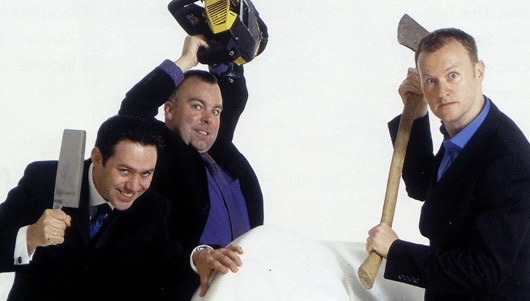
maybe the details of art are common knowledge, but i only read up about it yesterday. it's interesting! it opened in the west end in 96 & was something of a popular hit
it's about three old friends who fall out when one of them buys an expensive painting that's an almost-blank white canvas (a quiet night in); one of them aggressively disapproves, calling it pretentious; and the third is caught in the middle trying to keep the peace
had a ton of casts – a new one every three months. (the effect of this is interesting – more on that below.) tlog were selected to be the last lot before it closed in 02. if you don't already know, who do you suppose played each role? it has nothing to do with the weirdly deceptive promo pics. answers & more below the cut
mark played the friend who buys the painting, steve played the one who disapproves, and reece played the guy caught in the middle. i wonder how that decision was made. i wonder if they considered any alternative configurations (bf had steve & reece switched, which i think makes a lot of sense). as always i'm like. but what does the character say about YOU
they got mixed reviews. nearly every review singles out reece's delivery of this monologue, though they disagree on whether it was good or not. perhaps surprisingly, they don't uniformly characterise it (or his performance in general) as particularly angry. not to be dramatic but i would kill and die to have seen it, just that monologue alone
so below i've collected the most interesting parts of surviving reviews. the last one is my fav. some of them have interesting things to say on the effect of the rotating cast, sort of the opposite of the in9 meta-character effect, which i think is pretty funny & fitting
BBC
Reece Shearsmith is a little too giddy with Yvan's furious diatribe about his impending wedding - the laughs are landing so hard that some others are being lost in the process. But he is a particularly touching and vulnerable go-between, desperately sitting on the fence in the conflict that erupts between his friends Serge (Mark Gatiss) and Marc (Steve Pemberton), and finding - as you do - that those who sit on fences are liable to get splinters.
GUARDIAN
[A] play as bland and flimsy as this requires actors who are not only heroically talented but who also have formidable technical skills. Pemberton, Gatiss and Shearsmith don't. They are likeable, even mildly engaging but you are always aware that they are putting on a performance. What's more, they are far less funny than the two other casts I've seen. Shearsmith, for example, flunks the timing of his long monologue so instead of making an audience rock with waves of laughter, he gets only one big laugh right at the end. The silences in the evening, in particular the famous olive scene, are not eloquent, just empty.
THEATREGUIDE
I've heard, though, that other casts have had other dynamics. With some, it plays as light comedy, satirising everyone's pretensions to high passions. Others make it a touching study in the fragility of friendship and all three men's hitherto-unrealised need for it. The cast changes every three months or so [...] Just be prepared for the fact that the show you see will be different in tone and effect from the one your friends saw last year, and will probably be a glib skating over the emotional issues and implications it raises. [...] And while the laidback, indeed colloquial, approach of Mark Gatiss (perky Serge), Steve Pemberton (laconic Marc) and Reece Shearsmith (wickedly neurotic Yvan) may not be to everyone's taste, it's undeniably perfect casting to complete the spectrum of wall-to-wall talent that's made the show such a feature of London's theatrical landscape. [...] Playing cheekily with rhythms of speech and timing, they create a very English rendition of what is essentially a French play, substituting the de rigueur dramatic devices and flourishes with frighteningly real personalities that transcend the dramatic crutch of Yasmina Reza's Continental-style philosophizing text and sub-text. Admittedly the first ever cast of Courtenay, Finney and Stott all those years ago set the benchmark for the production (though I found them yawnsome and wooden) - and the League have the advantage of tapping into the accumulated performances that followed.
i think "laidback," "colloquial," "cheeky," "English" and "real" might be euphemisms for northern – more on that below
CIX
Having now seen Art three or four times (to be honest, I forget which), I've begun to muse that in some strange way it's a metaphor for itself. It's not just the performance dynamics, our impression of the trio's relationship, that varies from cast to cast... it's the very sense of how much real content there is in Reza's play, of whether it takes its thematic concerns about inherent versus attributed qualities (whether of a painting or a person) very far or not. In a sense, the performers are the series of diagonal white lines painted on to the white canvas of the play. And like the lines in the painting on stage (or so we're told), they're not pure white: some are vaguely yellow, some are sort of ochre-ish... In the case of the League, the bizarrely unrelated publicity images make clear that what's hoped for is a kind of fake-blood crimson tinge. So although there's no real indulgence, director Jennie Darnell allows the three to turn in a slight caricature of the naturalism with which the piece has usually been played, that little unreality often seen in the kind of sketch comedy where the group cut their teeth. The elegant apartment set is a world away from the League's fictional town of Royston Vasey, but the casting of the individual members plays to respective strengths familiar from their various screen guises. As Serge, who has paid 200,000 francs for the picture, Mark Gatiss exudes an appropriately smug and supercilious cleverness. As Marc, who faces off against Serge by declaring the canvas "shit", Steve Pemberton is more mercurial, with an air of suppressed violence. Reece Shearsmith, the relatively cuddly one [sic], succeeds in focusing audience identification on Yvan, the less smart piggy-in-the-middle. All three are of course skilled performers, and you can see the rapport gained from up to fifteen years' collaboration in, for instance, the way Gatiss and Pemberton trade facial "mugs" as they first consider the painting. However, this very affinity with each other enables them to skim over deeper elements in the play. When Shearsmith gabbles out Yvan's great bewildered set-piece about the complications of his wedding arrangements, we applaud the high-speed delivery but don't pick up enough of what he says to engage with Yvan's travails.
kissing this reviewer on the mouth for specifically describing what he thinks their respective strengths are & especially for describing reece as THE CUDDLY ONE like... idk if it shows but i'm obsessed with how people see them, and how they see themselves & each other
EVENING STANDARD
Not so much a piece of headline-grabbing stunt casting as three trained actors flexing their thespian muscles [...] bona fide drama graduates, not comedy chancers. This immediately shows, from their poise, projection and presence. Only the dimple-chinned Pemberton as intolerant Marc comes close to his rogues' gallery of BBC2 personae during moments of rage when he cannot come to terms with Serge's purchase of an overpriced minimalist painting. By contrast, Mark Gatiss as the punctilious, pretentious Serge is the epitome of restraint, as cool as his sharp, charcoal suit. The comic moments are all in context. Shearsmith, as the boyish Yvan, is increasingly troubled by his imminent nuptials. This eventually spills out in a breathless pseudo-Pythonesque rant against marriage that is as funny to witness as it is difficult to say. But throughout, the trio respect Reza's text, sidelining their insatiable appetite for the grotesque that has made their their brand of humour so distinctive. This may, however, be problematic. Having sold out in the West End with their sketch show a couple of years ago, some of the threesome's intensely passionate fans may see Art as a follow-up and feel shortchanged. The eye-catching poster may compound the deception, the chopper, axe and chainsaw being wielded suggesting some Grand Guignol flourishes which never materialise.
BBC AGAIN
The northern accents do not quite ring true in the sophisticated setting of a Paris apartment and often lead to flat performances, where one gets the feeling their brand of wit is not quite enough to portray Parisian conceit. The strongest display by far comes from Mark Gatiss (Serge) - the eerie butcher in League of Gentlemen - as the tall, slightly effeminate doctor who acquires the painting, striking just the right balance of preciousness and acerbic wit. The diminutive Reece Shearsmith is adequate in his portrayal of Yvan, the put-down-upon soon-to-be-married stationer caught in the middle of the feud between his two friends. But the biggest disappointment comes from Steve Pemberton, who plays Marc, the critical compadre who takes Serge's indulgence for contemporary art as a personal slight. Pemberton, normally the trio's strongest performer, well-known for his brilliant turn as Pauline in the League of Gentlemen, seems ill at ease in the role. His northern persona cannot quite stretch far enough to inhabit the part of Marc, an angry homeopathic freak whose insecurity finds it hard to cope with his friend's show of independence over the painting. Like the painting, the play does not remain colourless throughout however. One of the highlights is Shearsmith's 10-minute tirade about the difficulties of coping with the women in his life ahead of his impending wedding.
yeah this one is definitely my favourite. casually calls them ALL scallies, then calls each of them out INDIVIDUALLY for being a) gay b) short c) shit. absolute legend. did they ever find this reviewer's body
related, from this article in the guardian:
"When we first did Art, a review said 'Yes, but can they act?' and that made me angry," said Shearsmith. "I remember thinking 'What have we been doing in The League of Gentlemen? It's not standup."
in 2013, reece said art was his favourite ever play to do. highlights from the replies
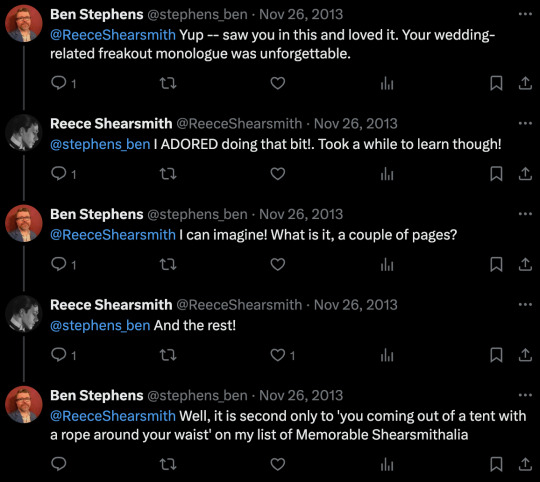
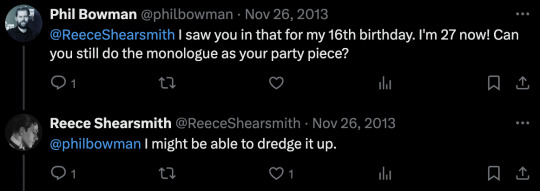

45 notes
·
View notes
Note
Love! My honor to have you join the game 🥰 I want to ask you all but i have to leave the chance to others. So 2,9,22,27 please 🥹🥹
thank you my dear :)
2. What were your first impressions to Steve&Reece?
first impressions ever I genuinely can't remember, it's been too long. probably that they were terrifying people because it was tubbs & edward and I was small!
9. I will Kiss/Marry/Kill this character (among all seasons)
i'm giving darling ronnie a little kiss on the forehead because he deserves kindness. i'll marry trevor because he's a sweetheart. i'll kill adrian for agnes if harriet won't do it. (or if chas never gets out of the bath then i will get you, joe!)
22. A character you wish Steve&Reece could have played (but they didn't)
I feel like this is a cheat answer from the podcast when steve and ralf little were talking about how terrible the kiss between david morrissey and the footballer was. I'd give steve that part so he can show him how it's done.
27. Do you have something special to show us related to inside no.9?
i don't have much outside the general memorabilia that everyone has, but i do have the s1 dvd signed before they knew what a hit the show was going to be (and steve wrote my name slightly like "shamen")

though the other day i got obsessed with the idea of making steve an in9 inspired cryptic puzzle box so if i ever do that, i'll share it.
9 notes
·
View notes
Note
top 5 in9 eps? :3
5. How Do You Plead?
Urban is one of my favourite in9 characters. I’m really empathetic towards him and the character he plays for his patients, and the reasons why he does it. I’m also just such a sucker for religious imagery, depictions of the devil and the classic tale of selling your soul. The atmosphere of the episode just generally really appeals to me. The gradual dimming of the lights into this green-blue darkness is just brilliant, and when Urban and Webster swap places in the lift the fluidity of that movement just itches my brain. And of course, the monologues! Love this episode!
4. Tom & Gerri
Migg is one of the scariest in9 characters to me. Steve’s performance is just so…chilling. Like Urban, Tom is another character I feel like I just get. I’ll get into it in a moment when I start talking about Diddle Diddle Dumpling, but I just am really impacted by depictions of grief and mental illness in media. Tom is one of my favourite Reece in9 performances, I just really feel for him. Also, I love Stevie’s character.
3. Cold Comfort
I love how uncomfortable this entire episode is. The camera never moves, never looks away, and in turn the viewer has to sit there and watch just as Andy has to sit there and listen. It feels hopeless. Andy is one of my favourite Steve performances + characters. All of the characters in this episode are on top of each other in this awful, cramped, emotionally charged space, yet they’re all completely disconnected and alien to one another. The only character who you feel understands the others is George, and George is…George. I’m a sucker for ambiguity and there is so much to rifle through and ponder about in this episode. Plus the sound design is so good at matching that horrible, invasive atmosphere.
2. Diddle Diddle Dumpling
I love the mise-en-scène for this episode; that sanitised, shining-esque mirroring throughout the whole house just suggests so much of what is left unsaid about David and Louise’s grief. And I do really like how little is actually said about Joseph in this episode. I’m always really invested in media where an object is so clearly representative of something else, especially when that something else is a loss or an absence of sorts. David is a very relatable character to me and I just feel so strongly for both him and Louise. What a devastating episode.
1. Wise Owl
No surprises here I don’t think! Wise Owl was the first in9 episode I ever watched, and it’s stayed my favourite unwaveringly throughout me watching the entire show. I’ve had an anxious obsession with Public Information Films ever since I was a kid - especially the fire safety ones - so having an episode modelled around them is just a narrative decision that gets me invested from the get-go. I think this episode has an entirely different feeling to it compared to the rest of the show, and I’m so happy they went with the ending that they did and I’m so happy with how Ronnie was written and performed - especially when I think about how easily they could’ve gone down a different route. Also there’s no competition in my mind for the best in9 episode ending. Such an important episode.
#i’m sorry i really struggled to put into words why each episode is a favourite#i hope this reads okay!
10 notes
·
View notes
Text







And I say, "One shoe off and one shoe on," then we all say, "Diddle diddle dumpling, my son John."
INSIDE NO. 9 - S3E5 | Diddle Diddle Dumpling
#in9#inside no 9#inside no. 9#in9 frames#diddle diddle dumpling#guillem morales#reece shearsmith#(pretty sure sally says “and a-one shoe on” but i'll write it as “one”)#i've lost count of how many times i've watched this ep#but only recently did i realise why david is staring out the window Like That in the first “summer” scene#it's not only sally's birthday...#i think i wanna make another post about the costumes or just talk about them in relation to the ep in general#bc david/louise/sally are almost always dressed in similar colours/tones#to project the image of the “perfect middle class family”?#vagueeyes.txt#edit: fixed the italics. why does it keep messing up??
42 notes
·
View notes
Text
okkkkk sure, in9/tlog/etc are funny, pembersmith are adorable, but just like i've never laughed harder at a bit of canon content than i have at certain fanworks, i've seriously never felt more moved by anything shippy than i just did seeing what generous gifts this fandom will give each other :')
#get you a fandom that will pick up your whole self and run with it <333#if there was ever a time for me to be braver it's now :')#intentionally vague but if you know the context i sincerely hope you're amused by how on-paper utterly jarring this wholesome reaction is#we're all about the dialectics baby! probably#i love everyone in this bathroom#gather gifts
5 notes
·
View notes
Text
Someone give me an In9 episode to watch
I'm about to go to a random number generator because I can't choose which one I want to watch lol
#inside no 9#in9#Usually when I finish a show my obsession dies down a bit#Not this one. It's still going strong#Probably because I have no one to ramble to about it#So it's all just bouncing around in my head#Begging to be let out#I shall distract myself by watching more and making it worse lol
6 notes
·
View notes
Note
7 & 15 for the in9 asks (if they're not already answered!)
thank youu!! i actually haven't answered either of these yet lol!
7. Your favourite characters of the boys?
feel like i've brought up george in every one of these asks i SWeear i'm not obsessed w/ him lol i just think he's fascinating in a strange way... also david in ddd is such a phenomenal character and performance, blows me away every time i rewatch it tbh!
for steve it's gotta be len! his performance is just so good! also do rly love him playing awful bastards like blake or adrian lol...
15. Your favourite look of Steve & Reece? (Costume wise)
both looked SO good in the period drama episodes (elizabeth gadge & curse of the ninth)! i also just love period drama costumes in general, there's so much detail in them that you dont necessarily get w/ modern costumes!
also big fan of drew's (kinda awful) diamond jumper lol...
2 notes
·
View notes